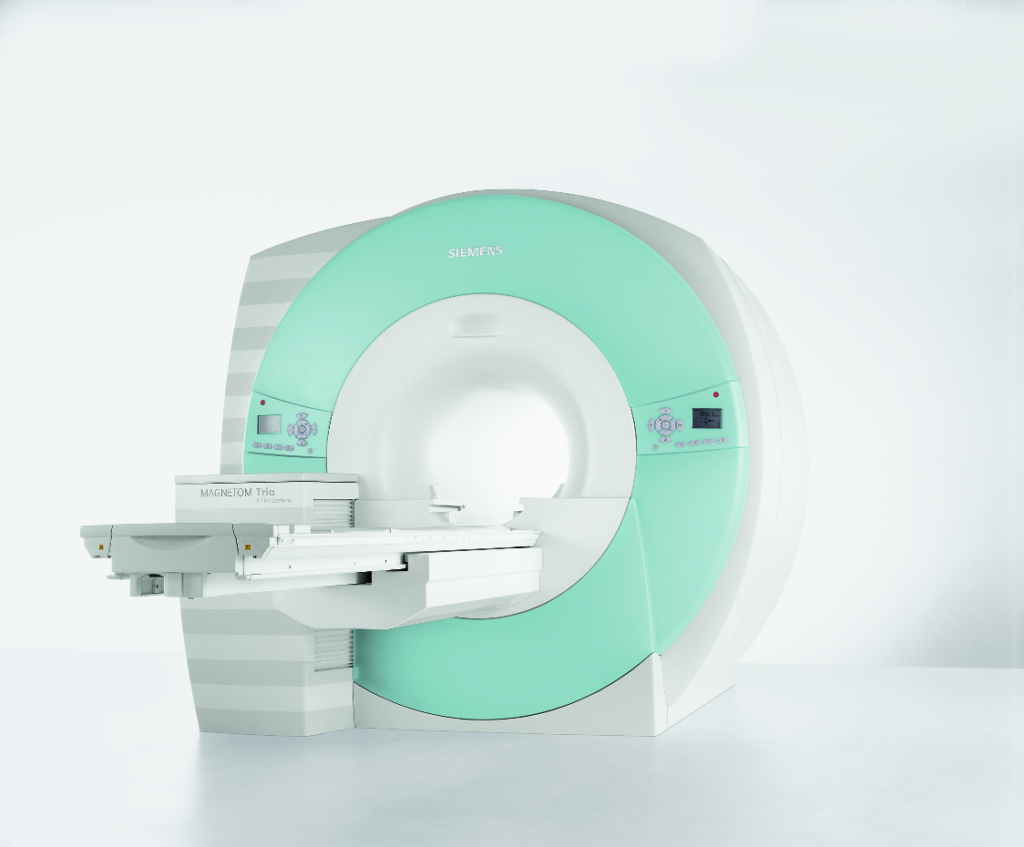MRI Scanner

The Core Facility provides access to an MR scanner (Siemens Magnetom TIM Trio 3 T). It was purchased in 2005 and upgraded in the fall of 2013. This provides 32 receiving channels. In addition to the Spine Matrix Coil and two Body Matrix coils, the standard 12-channel head coil with neck coil and a 32-channel head coil are available. Furthermore, a transmit/receive coil (TX/RX) can be used for spectroscopy. The selection of the available coils shows that the focus of the facility has so far been in the field of neuroscience. Therefore, most of the experience is in the core facility for investigations of the brain, in particular for neuro-cognitive questions with functional MRI (fMRI). However, the investigation of other body regions is basically possible (taking into account the available coils).
The scanner is equipped with the sequences to cover a wide range of investigations. Besides the usual sequences for brain imaging (FLAIR, STIR, T2-weighted, T1-MPRAGE), protocols for DTI and functional MRI (EPI) are available. The Core Facility supports its users in setting up the measurement protocols and adjusting the measurement parameters.
Paradigms
The Core Facility provides a computer for the presentation of paradigms (stimulation in functional MRI). The “Presentation” software (Neurobehavioral Systems) is installed on this computer. The Core Facility also provides the “ScenarioDesigner” for the presentation of paradigms. ScenarioDesigner is a python-based program developed by the Core Facility itself, which allows for much simpler programming than other programs. The Core Facility supports users in the creation of ScenarioDesigner programs.
Visual System
The “Visual System” from NNL (Nordic Neuro Lab) consisting of video glasses (goggles) and response buttons is available for the transmission of the presentations into the magnetic space. The video goggles create the impression of a large image (like a cinema screen) and shield lateral influences. This allows the respondent to immerse himself more intensively in the scene and is less distracted. A correction of defective vision is directly integrated into the video glasses.
LCD Monitor
Alternatively, the paradigms can be displayed on an LCD screen placed at the head-side magnetic tunnel entrance. The subjects see the image through a mirror attached to the head coil. A set of lenses is available to correct defective vision.
